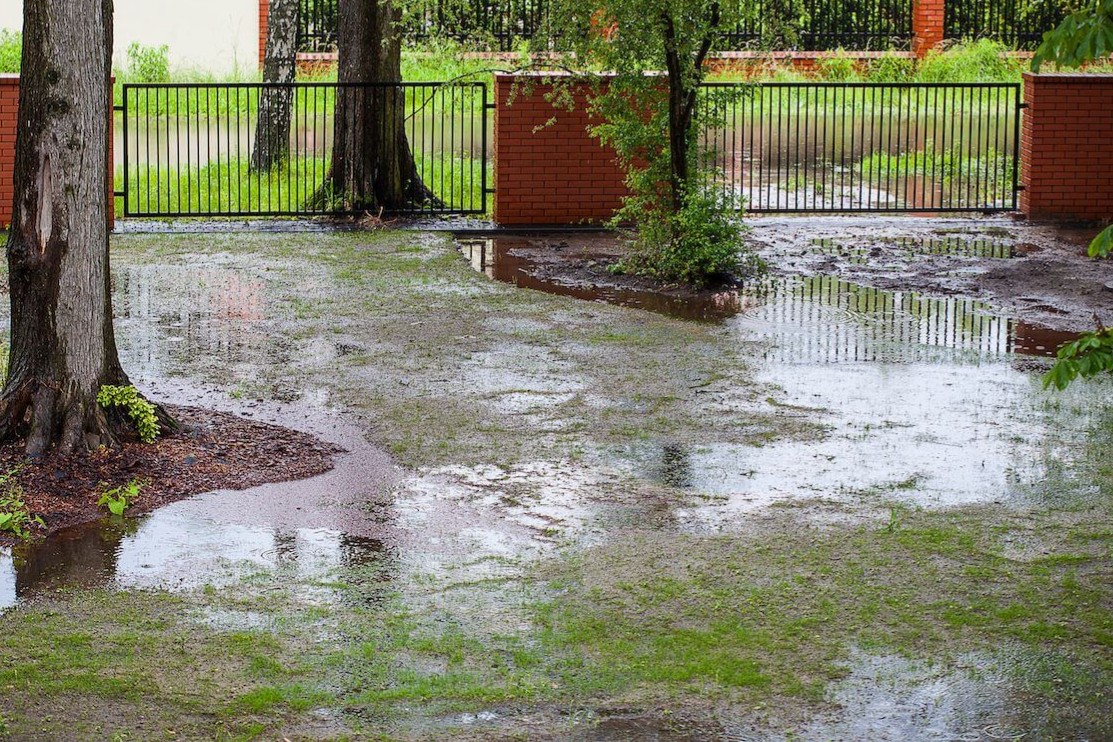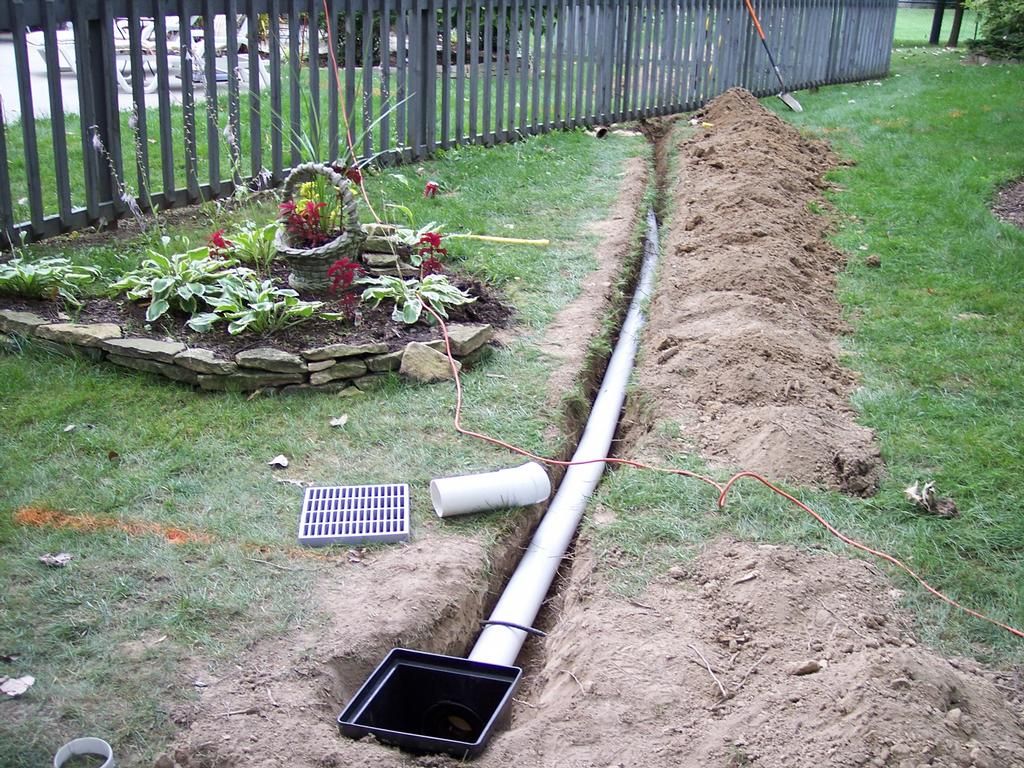Proper drainage is vital for maintaining a healthy garden, especially in areas like Coventry where rainfall is frequent. Without an effective drainage system, your garden could suffer from waterlogging, flooding, and even damage to plant roots, pathways, and structures. In this article, we’ll explore different garden drainage system that can help prevent waterlogging and flooding, ensuring your garden remains functional and aesthetically pleasing, no matter the weather.
Why Garden Drainage is Important in Coventry
Coventry experiences a temperate maritime climate, which brings moderate to heavy rainfall throughout the year. While this can be great for plant growth, it also means that water can easily accumulate in gardens, leading to poor drainage conditions.
When water doesn’t flow freely through the soil or run off from your garden, it can cause:
- Waterlogging: Saturated soil that prevents air from reaching plant roots, leading to root rot and stunted plant growth.
- Flooding: Excess water that flows over the surface, damaging plants and eroding soil.
- Soil Erosion: Water moving too quickly can wash away valuable topsoil.
- Foundation Damage: Water accumulating near the base of your home can weaken the foundation and cause structural issues.
Implementing the right drainage solutions will help keep water where it belongs, maintaining the health of your garden and your home’s structural integrity.
Top Garden Drainage Systems to Prevent Waterlogging and Flooding
Here are some of the most effective garden drainage systems for preventing waterlogging and flooding in Coventry:
1. French Drains
A French drain is one of the most reliable and efficient drainage systems for gardens in Coventry. It consists of a trench that’s filled with gravel or rocks, with a perforated pipe running through it to redirect water away from problem areas.
How It Works:
- Water collects in the trench, which is filled with porous materials (gravel, rocks).
- The perforated pipe helps move the water out of the garden and into a designated drainage area, such as a soakaway or storm drain.
Benefits:
- Effective for areas prone to waterlogging.
- Low maintenance once installed.
- Can be adapted to suit different garden shapes and sizes.
Best for: Gardens with persistent pooling or areas near the foundation that need to be kept dry.
2. Surface Water Drains
Surface water drains are ideal for areas with heavy rainfall or where water tends to accumulate on paved surfaces, such as patios, driveways, or garden paths. These drains are typically installed with grates or slotted channels that direct surface water into a pipe system leading away from the garden.
How It Works:
- Water from rain, sprinklers, or irrigation is funneled through grates or slotted drains.
- The collected water is diverted into a drainage pipe or soakaway.
Benefits:
- Perfect for driveways, patios, and paths.
- Prevents surface water from flowing into flower beds or lawns.
- Minimizes puddles and standing water.
Best for: Hardscaped areas like driveways, patios, or pathways where water is prone to pooling.
3. Soakaways
Soakaways are a natural and eco-friendly solution to managing excess water in the garden. A soakaway involves digging a hole filled with gravel, rubble, or other permeable materials that allow water to gradually soak into the ground.
How It Works:
- Water is directed into a pit or soakaway via underground pipes.
- The water is then absorbed into the soil around the soakaway.
Benefits:
- Eco-friendly, reducing water runoff and promoting groundwater recharge.
- Low maintenance.
- Ideal for gardens with good natural drainage and well-draining soil.
Best for: Gardens with permeable soil and where water needs to be absorbed naturally into the ground.
4. Sump Pumps
Sump pumps are a practical solution for gardens that experience serious flooding, particularly in low-lying areas or properties with basements. These pumps collect excess water in a sump pit and pump it away from the property, preventing flooding and waterlogging.
How It Works:
- Water from the garden or basement collects in a sump pit.
- The sump pump automatically activates when water reaches a certain level and pumps it to an appropriate drainage area, such as a storm drain or soakaway.
Benefits:
- Perfect for properties prone to heavy flooding or water buildup in basements and lower areas.
- Keeps areas dry and prevents water from seeping into foundations.
- Can be connected to other drainage systems for enhanced efficiency.
Best for: Basements, low-lying gardens, or areas with frequent heavy rainfall.

5. Trench Drains
Trench drains, or channel drains, are effective for handling large amounts of water in areas with heavy traffic or where surface water runoff is significant. These drains are installed in long, narrow trenches along paths, driveways, or garden borders.
How It Works:
- The trench is lined with a slotted or grated cover that allows water to enter.
- Water flows down the trench and is redirected to an underground pipe system or soakaway.
Benefits:
- Ideal for large garden areas, driveways, and patios.
- High-capacity drainage solution for properties experiencing significant water runoff.
- Can be designed to blend in with your garden’s aesthetic.
Best for: Larger areas or places where significant water runoff occurs, such as driveways, large lawns, and commercial spaces.
6. Permeable Paving
For gardens with paved areas like paths, driveways, or patios, permeable paving is a great way to manage water runoff. These materials allow water to pass through the surface, reducing runoff and improving drainage.
How It Works:
- Permeable paving allows water to seep through gaps in the material and into the ground below.
- The water is filtered and absorbed by the soil beneath, preventing puddles and standing water.
Benefits:
- Eco-friendly and sustainable.
- Reduces surface water runoff and flooding.
- Adds a stylish, modern touch to your garden design.
Best for: Paths, patios, and driveways that need an effective drainage solution without compromising aesthetics.
7. Gutters and Downpipes
Although gutters and downpipes are primarily designed for roof drainage, they play an essential role in keeping water away from the foundation and garden areas. Ensuring that your gutters and downpipes are functioning properly can prevent water from flowing over the edges and causing flooding in the garden.
How It Works:
- Gutters collect rainwater from the roof and direct it down the downpipe.
- Water is then diverted to a suitable drainage system, such as a French drain or soakaway.
Benefits:
- Protects the foundation of your home from water damage.
- Reduces flooding around the perimeter of the house.
- Prevents water from flowing into flower beds and lawns.
Best for: Homes with large roofs or where water runoff from the roof contributes to garden flooding.
Conclusion
Preventing waterlogging and flooding in your garden is essential for maintaining a healthy, attractive outdoor space in Coventry. Whether you install French drains, soakaways, or permeable paving, each drainage solution offers unique benefits to suit different garden needs. By addressing drainage issues proactively, you can protect your plants, prevent erosion, and keep your garden dry and manageable, regardless of the weather.
